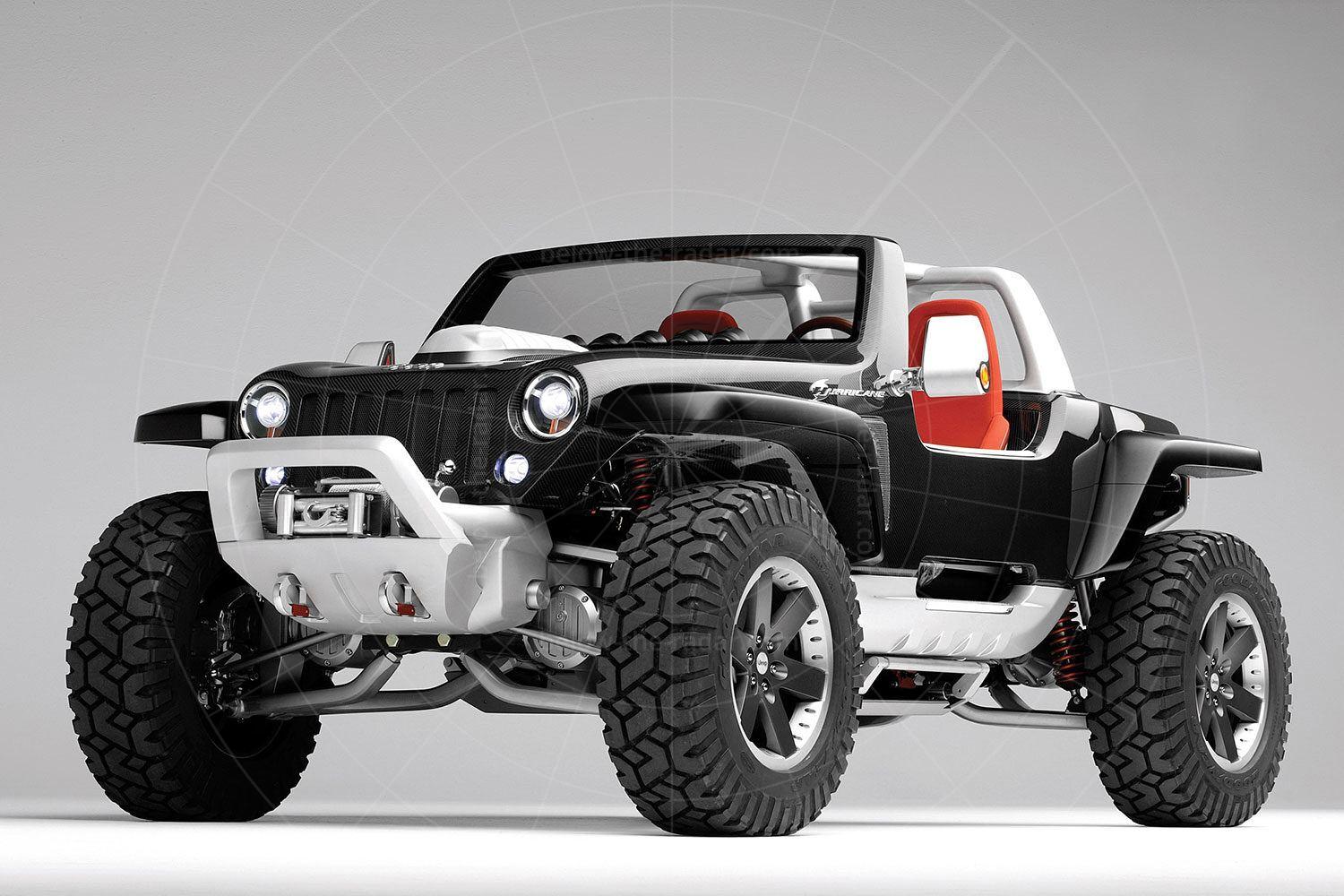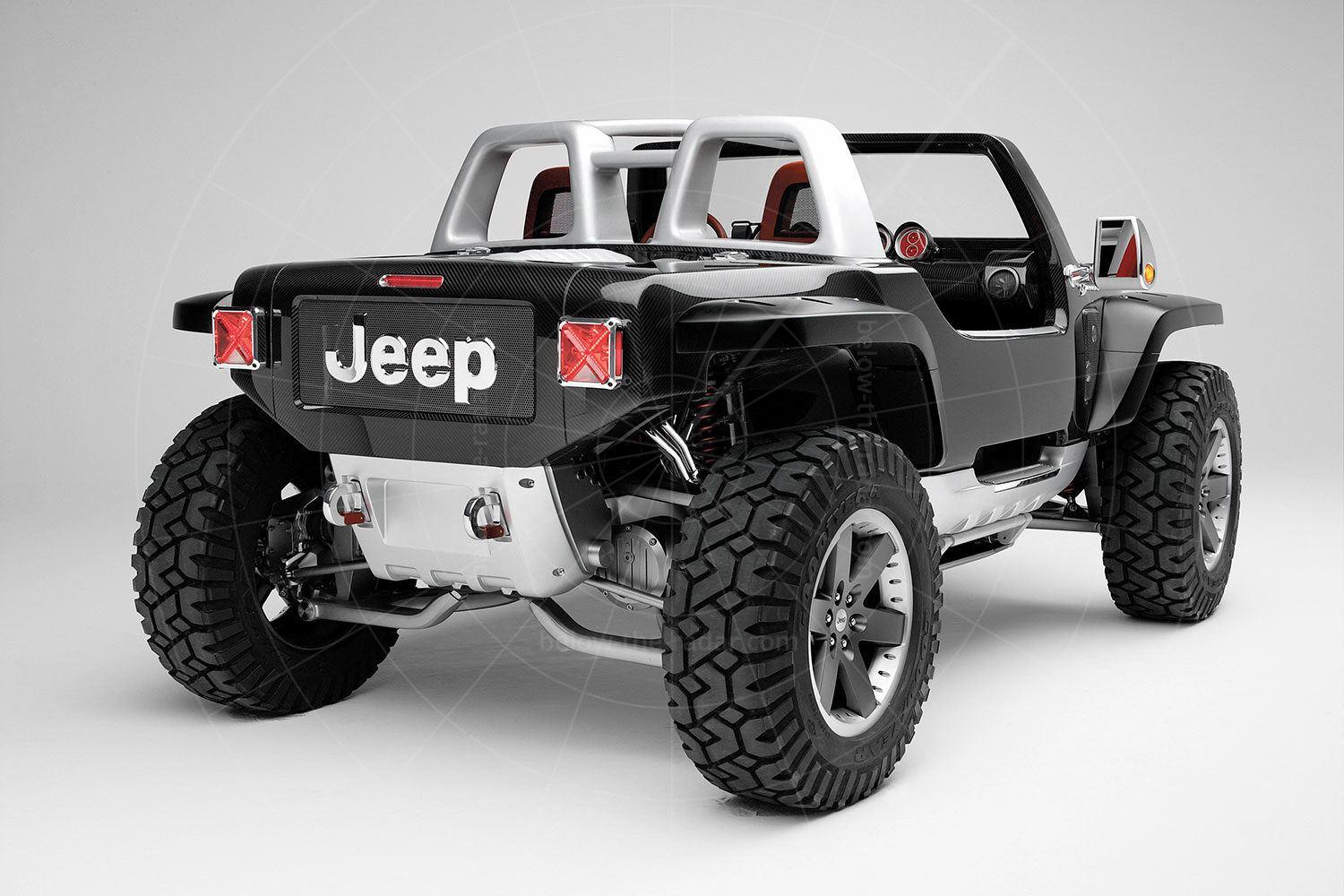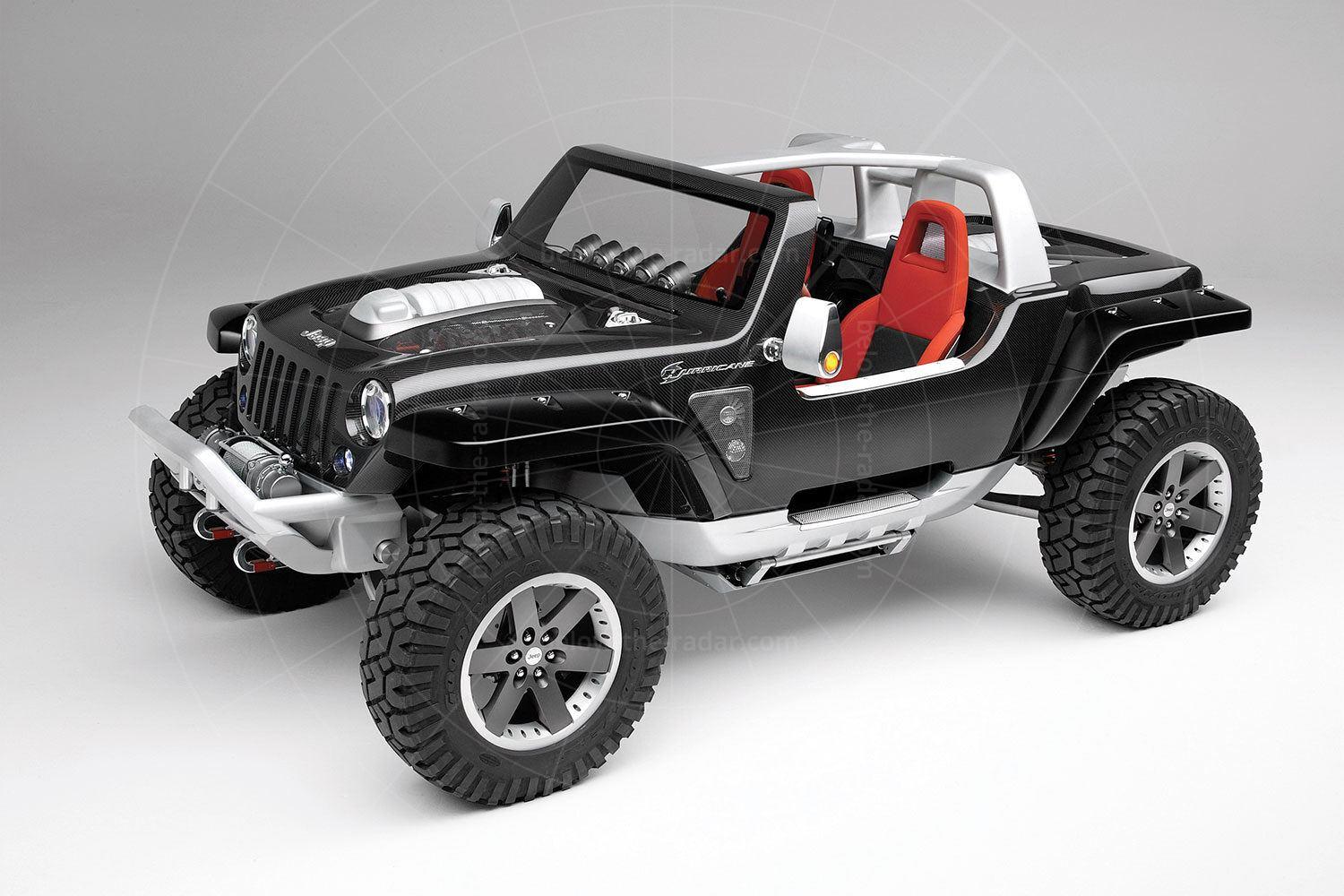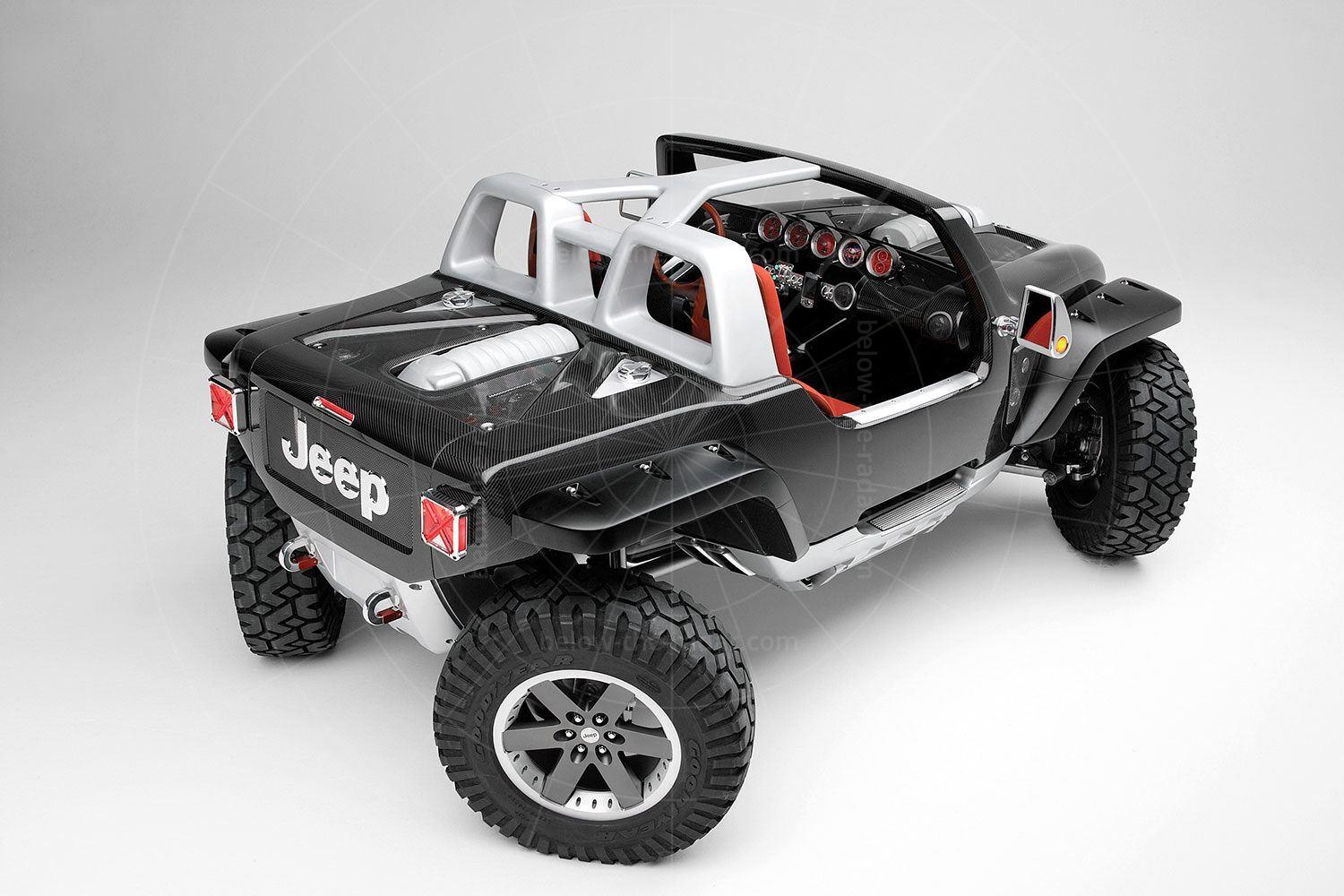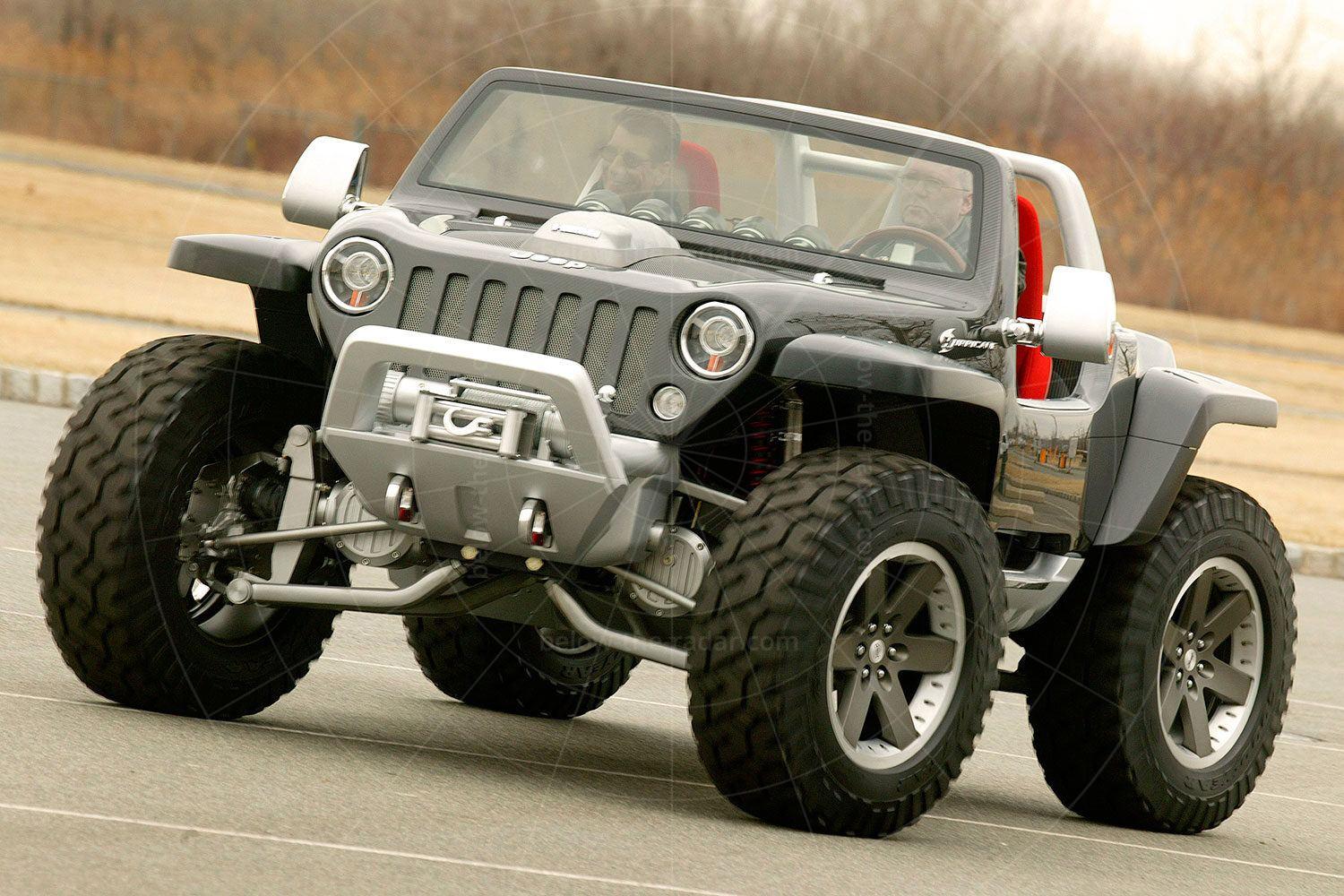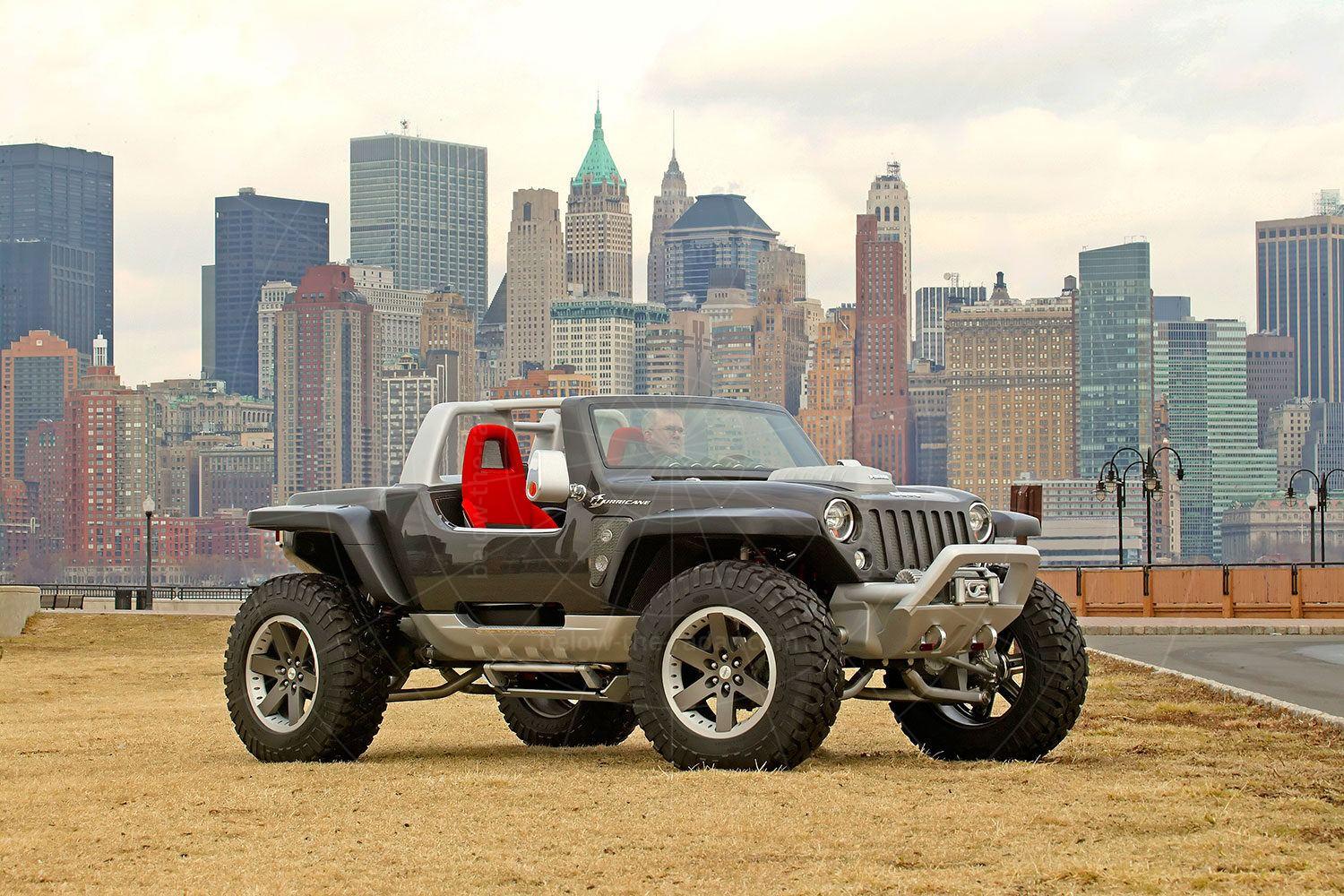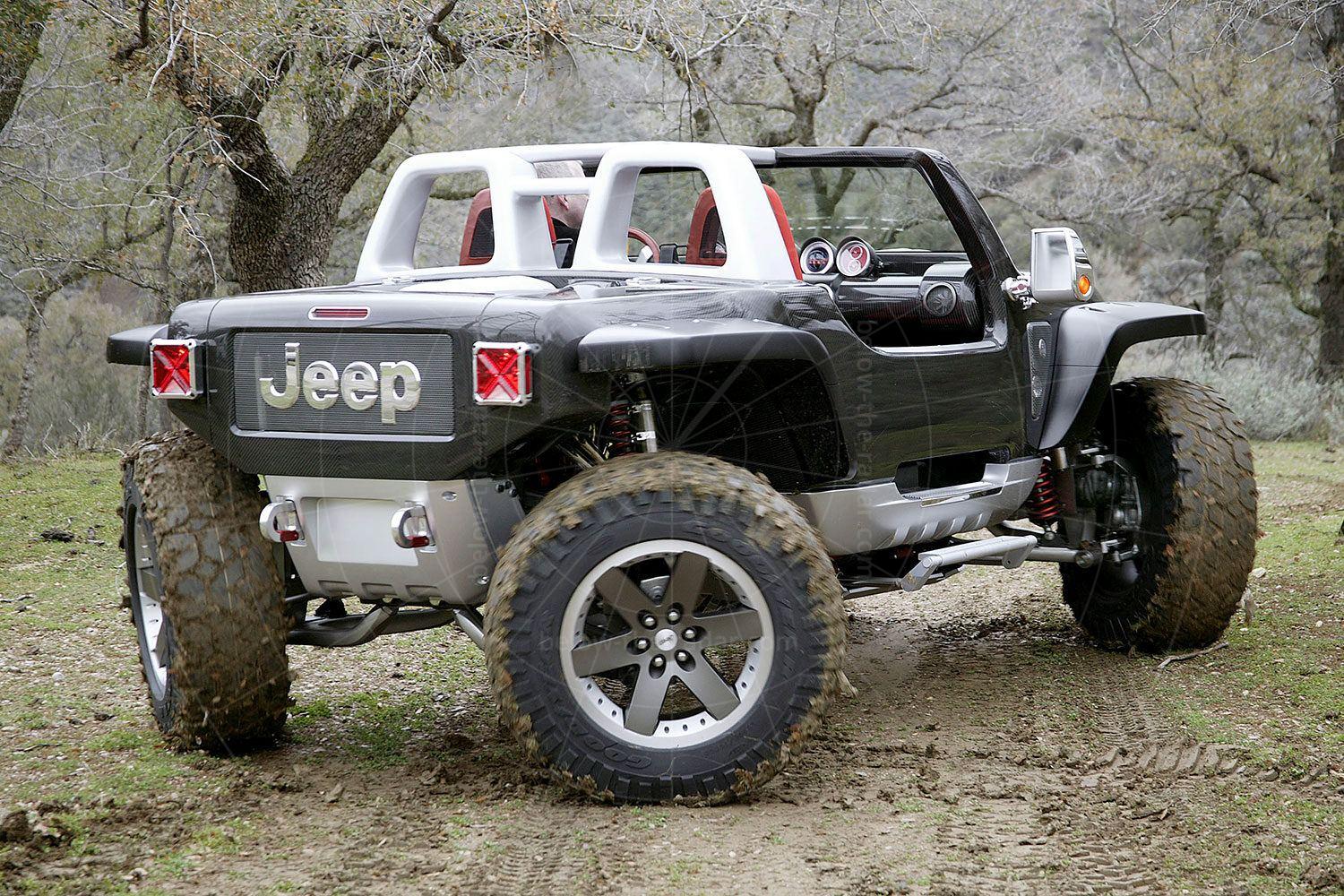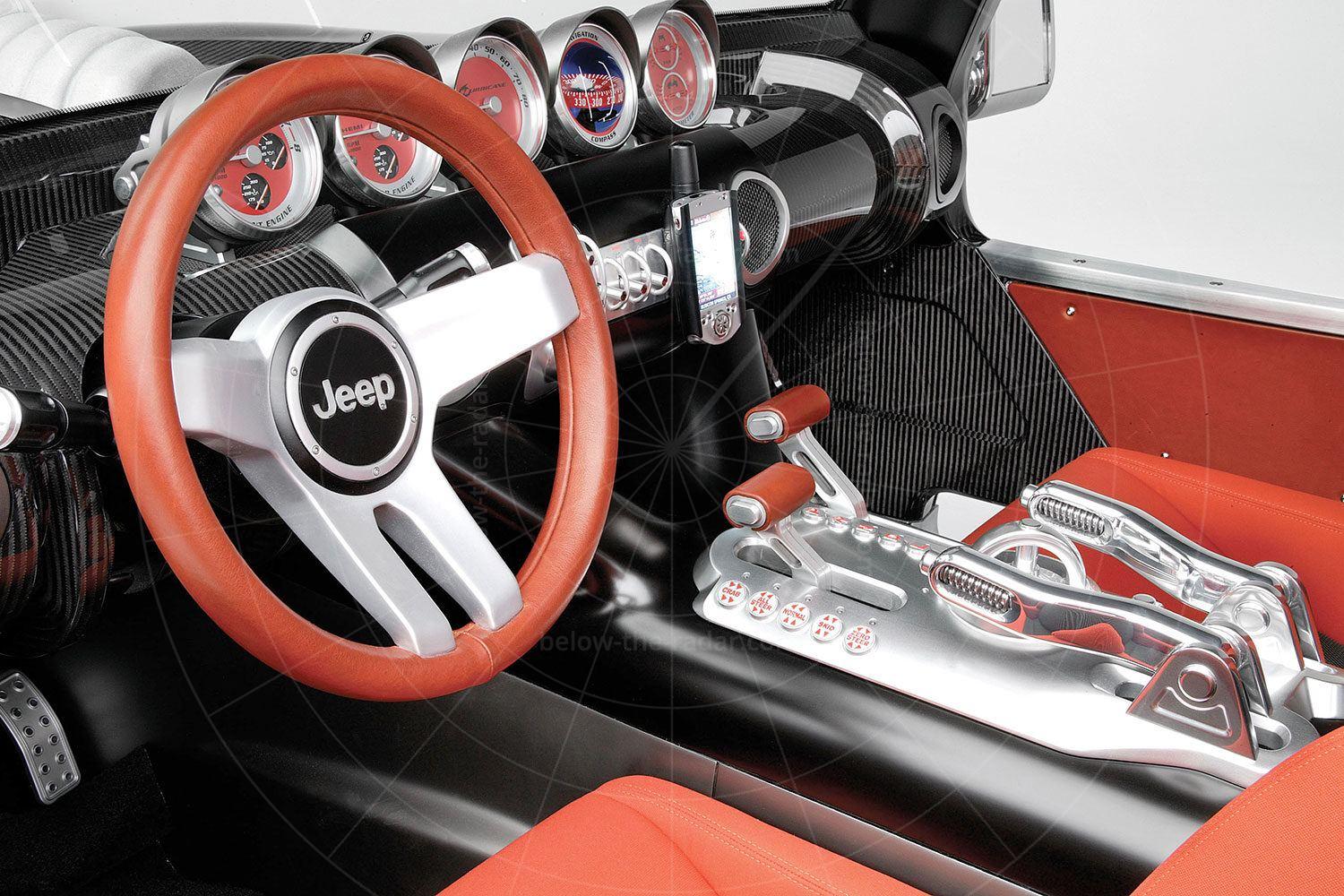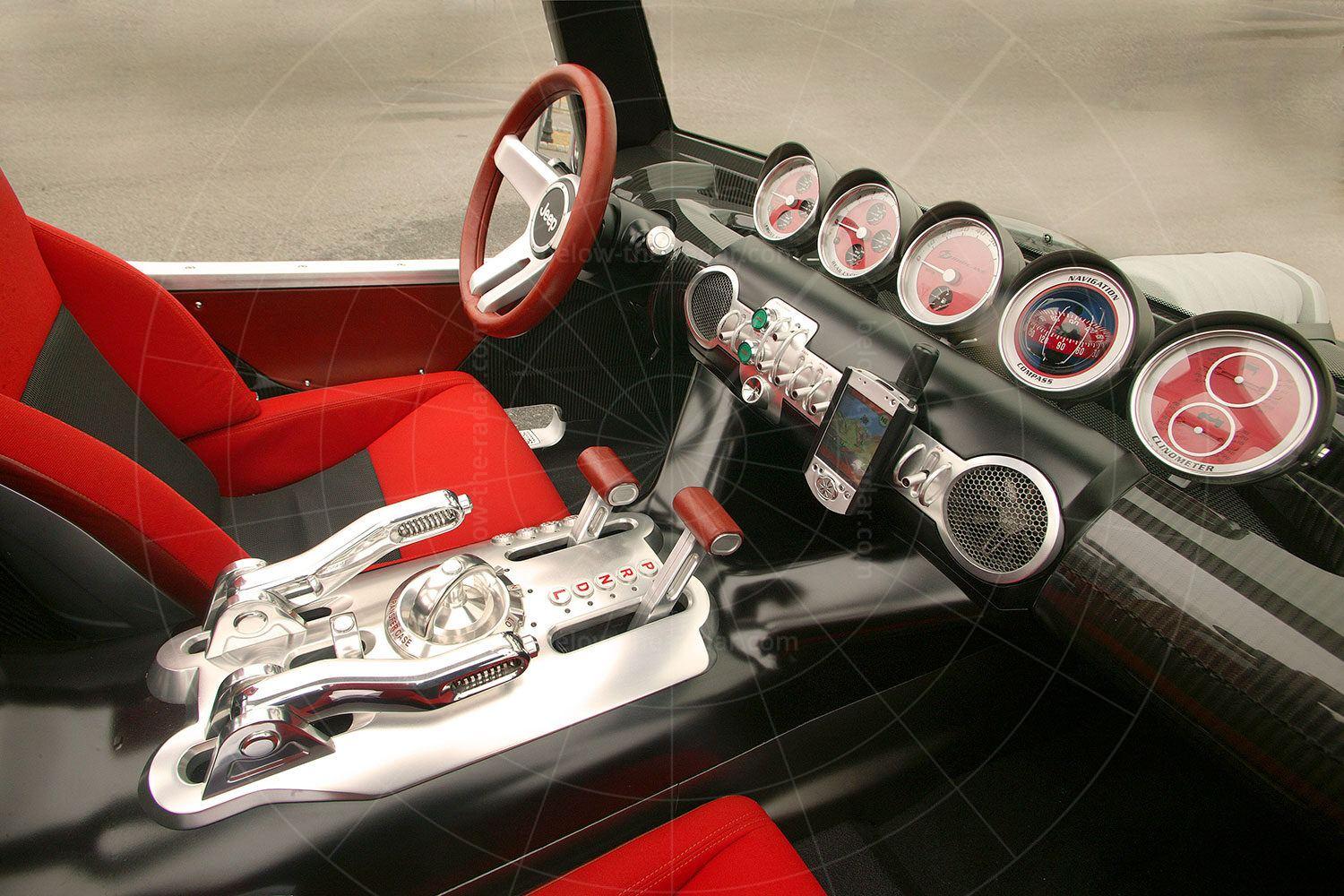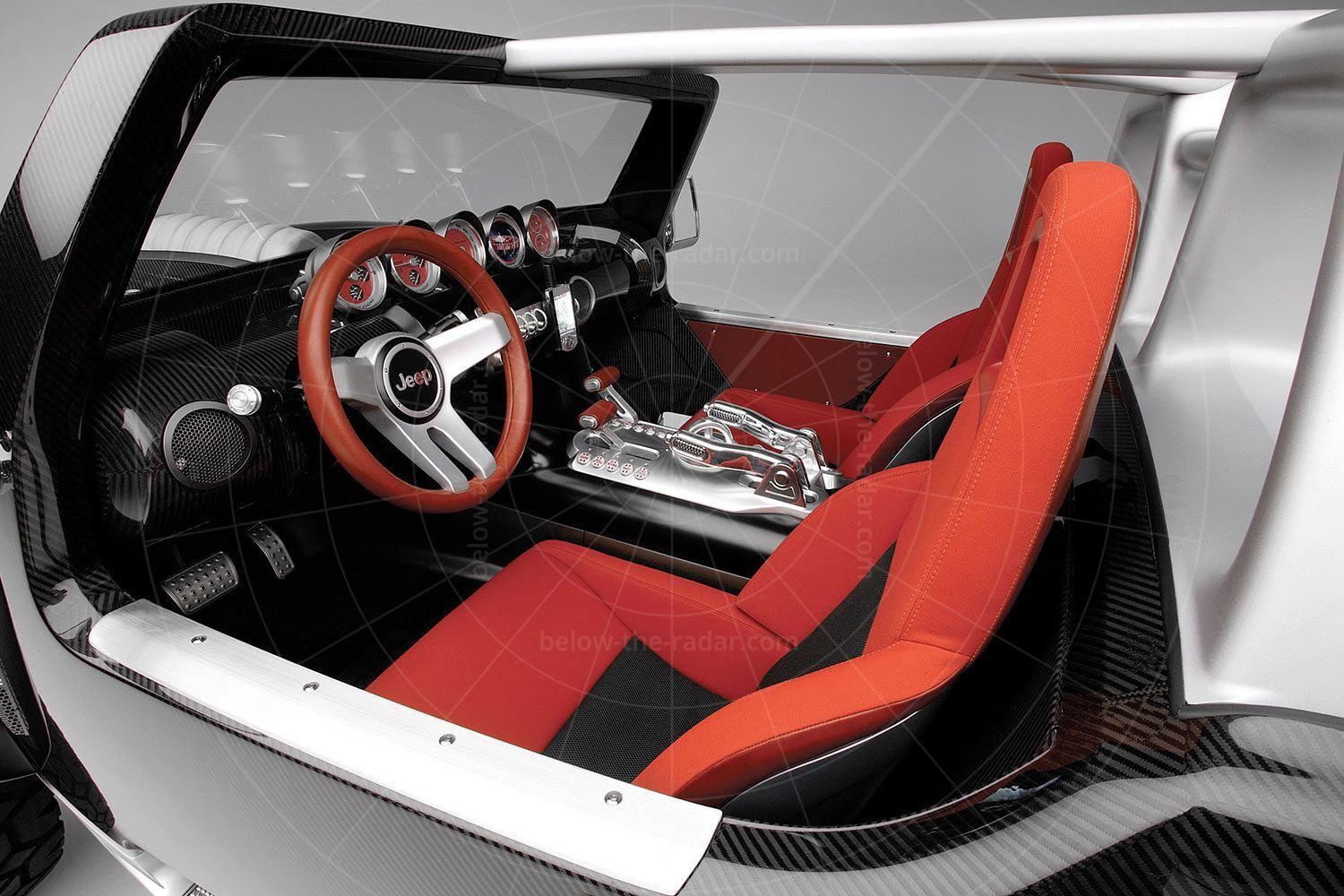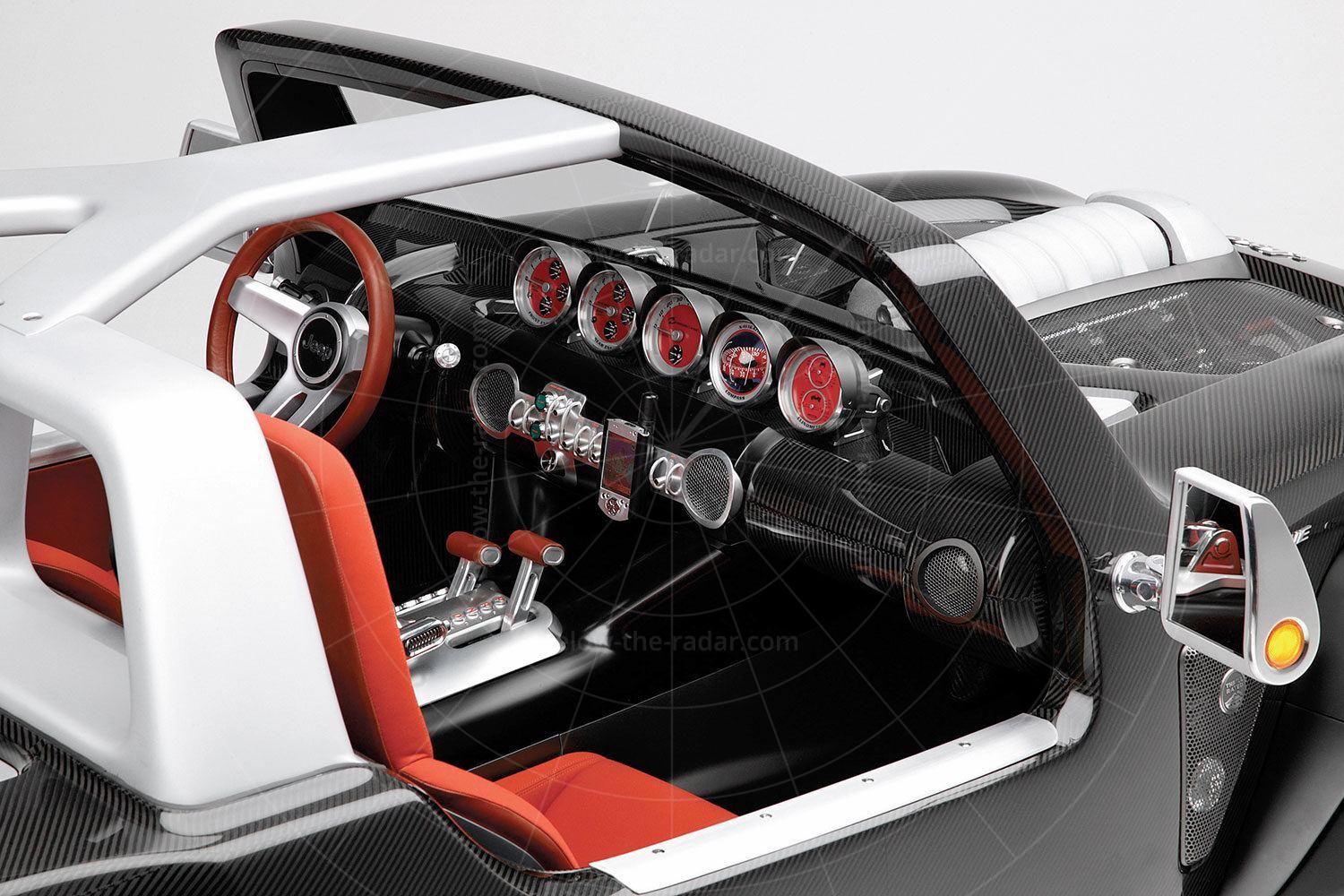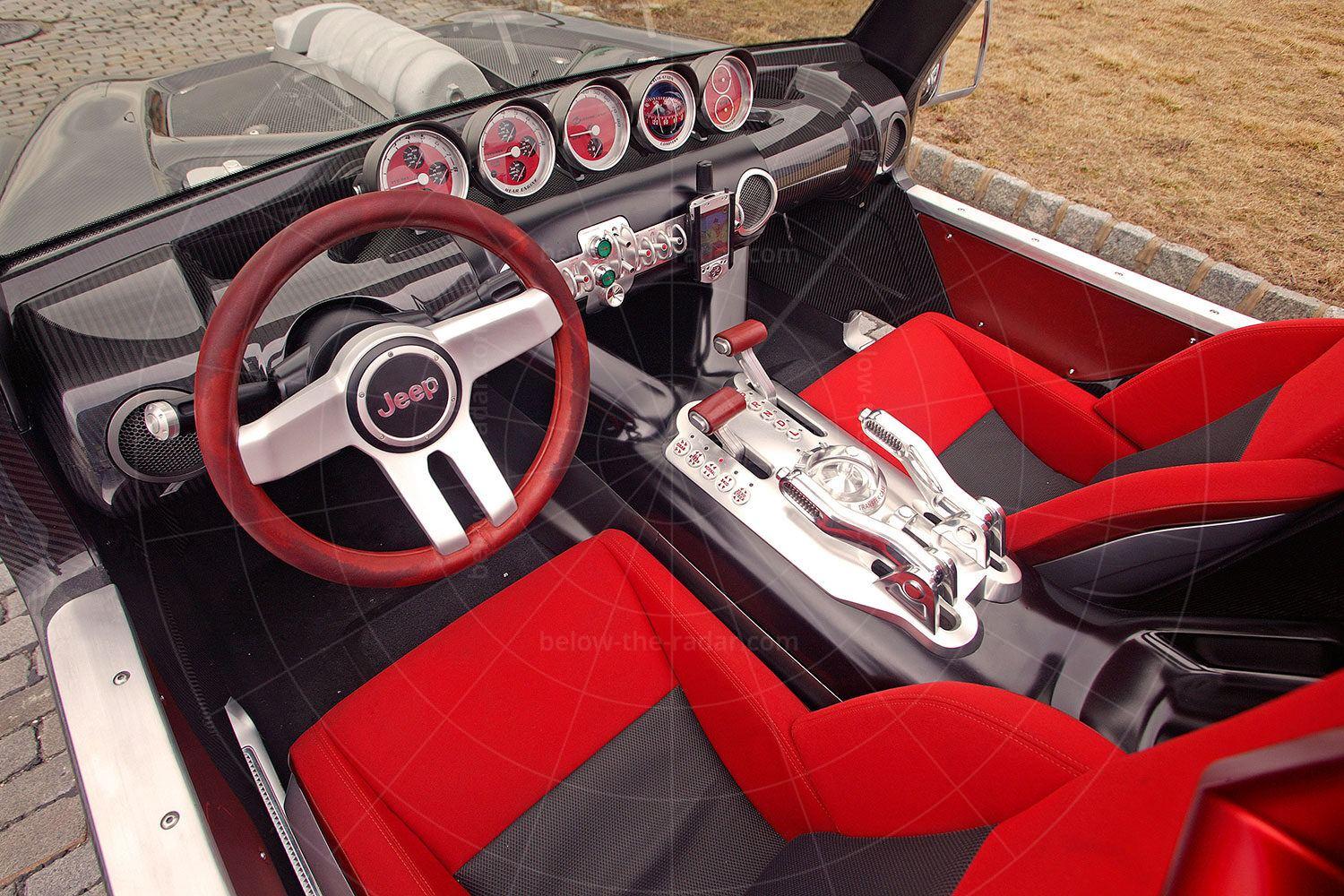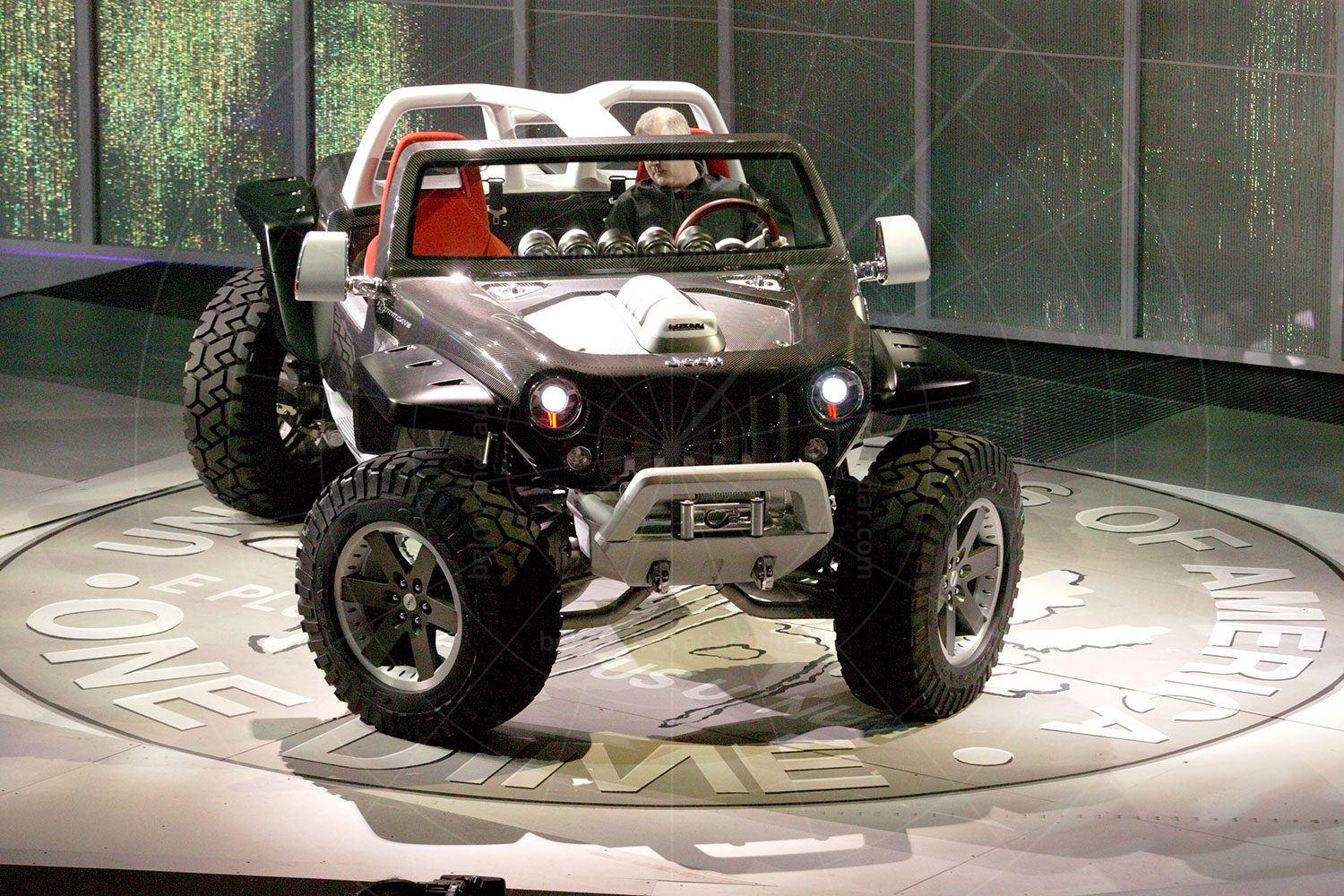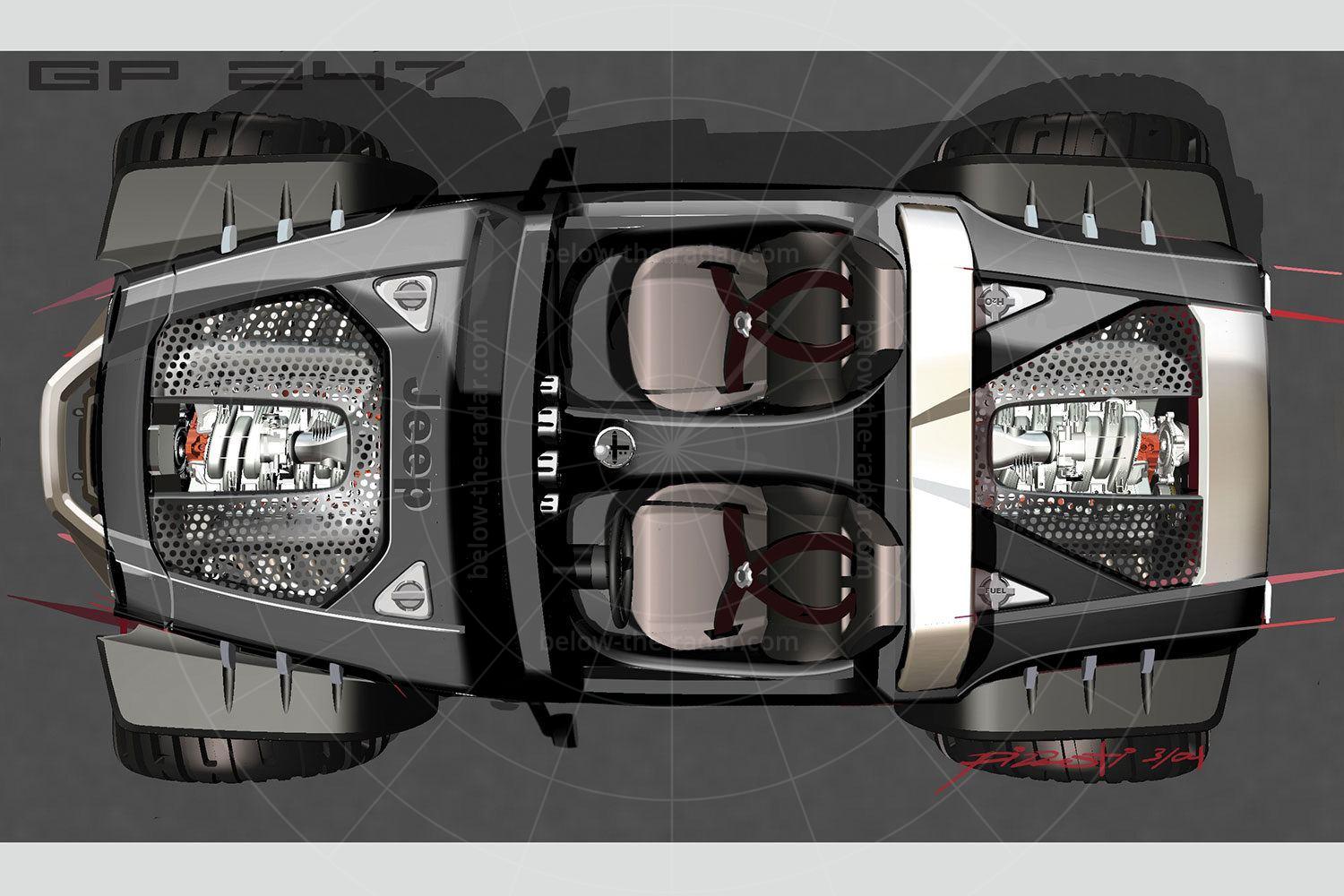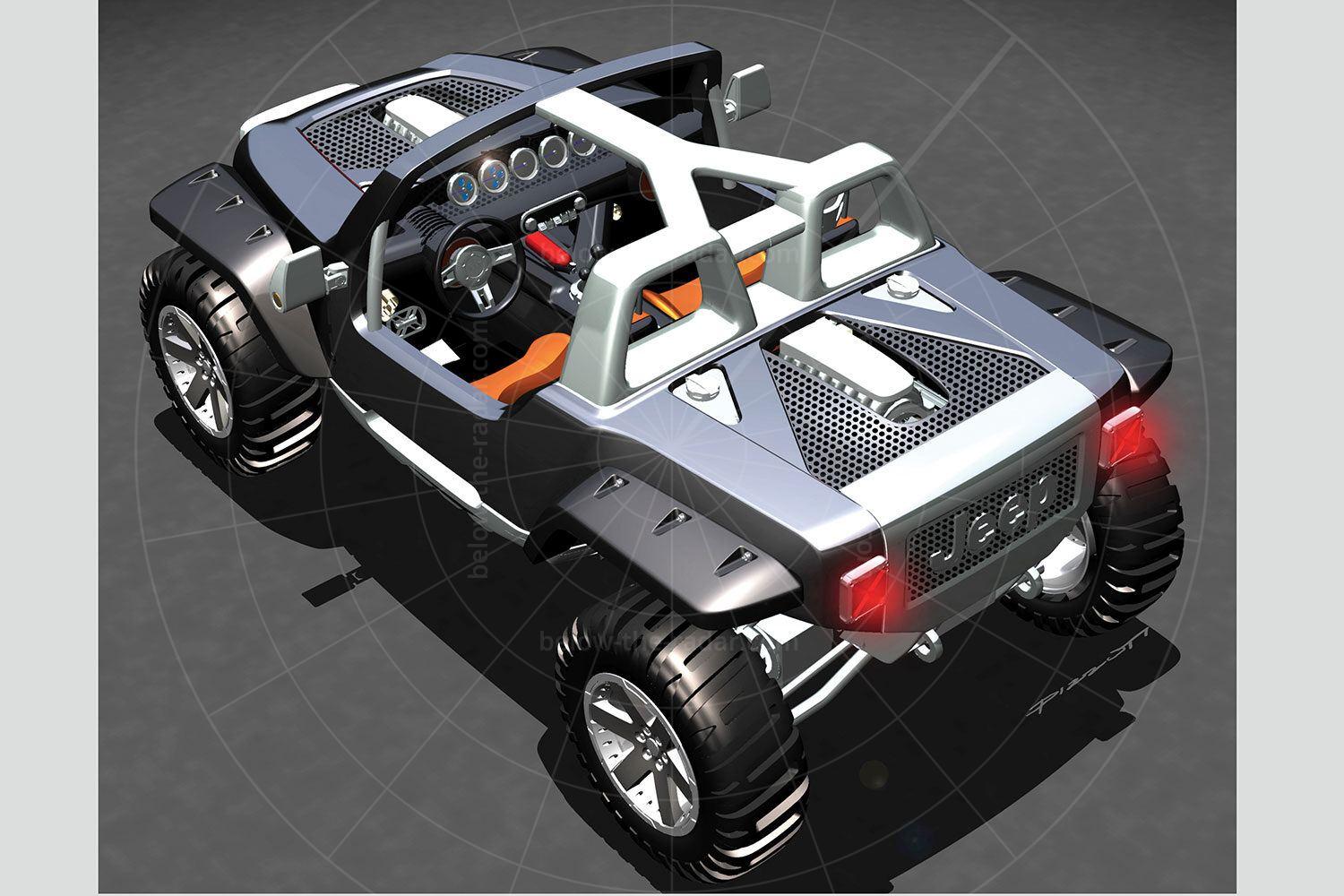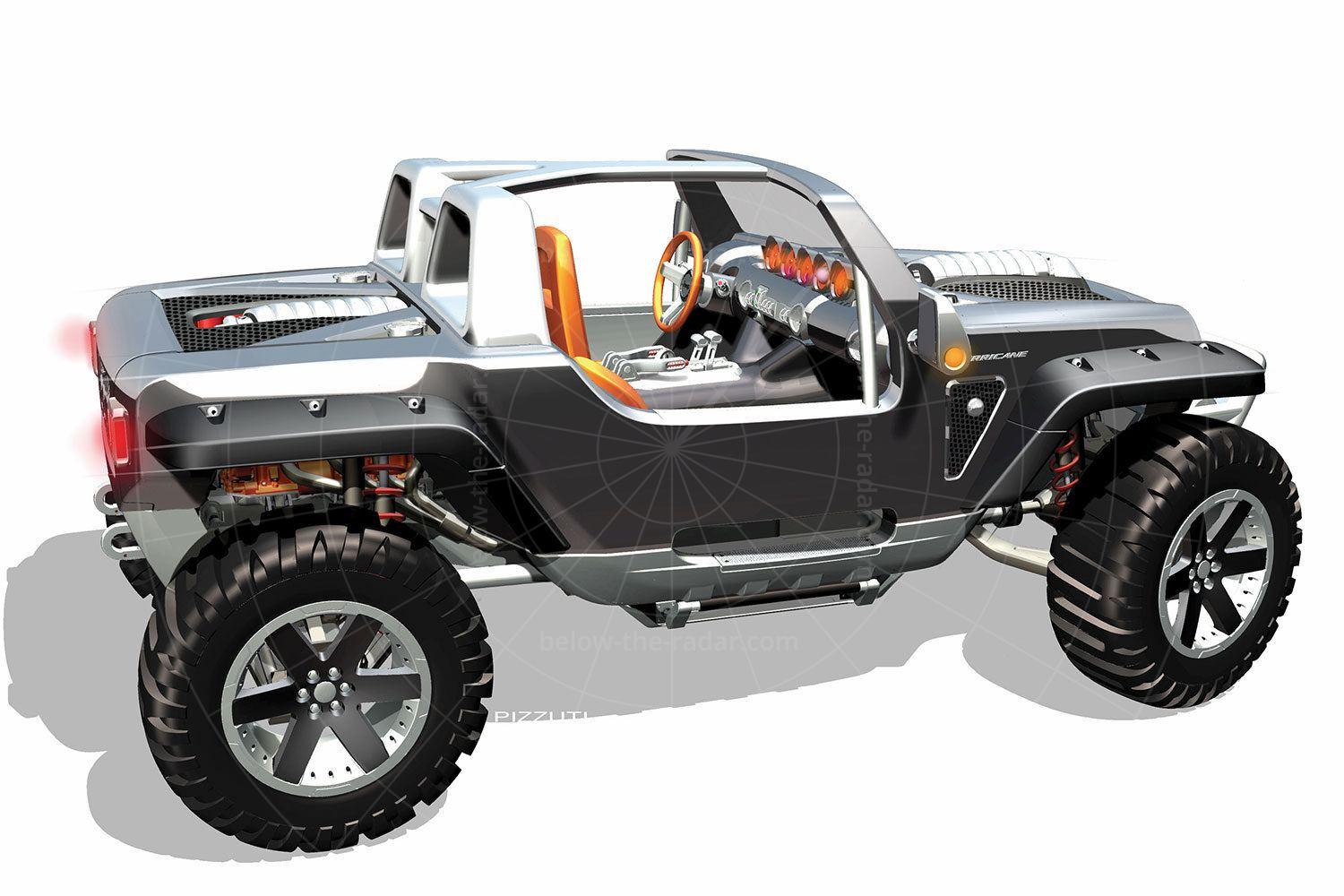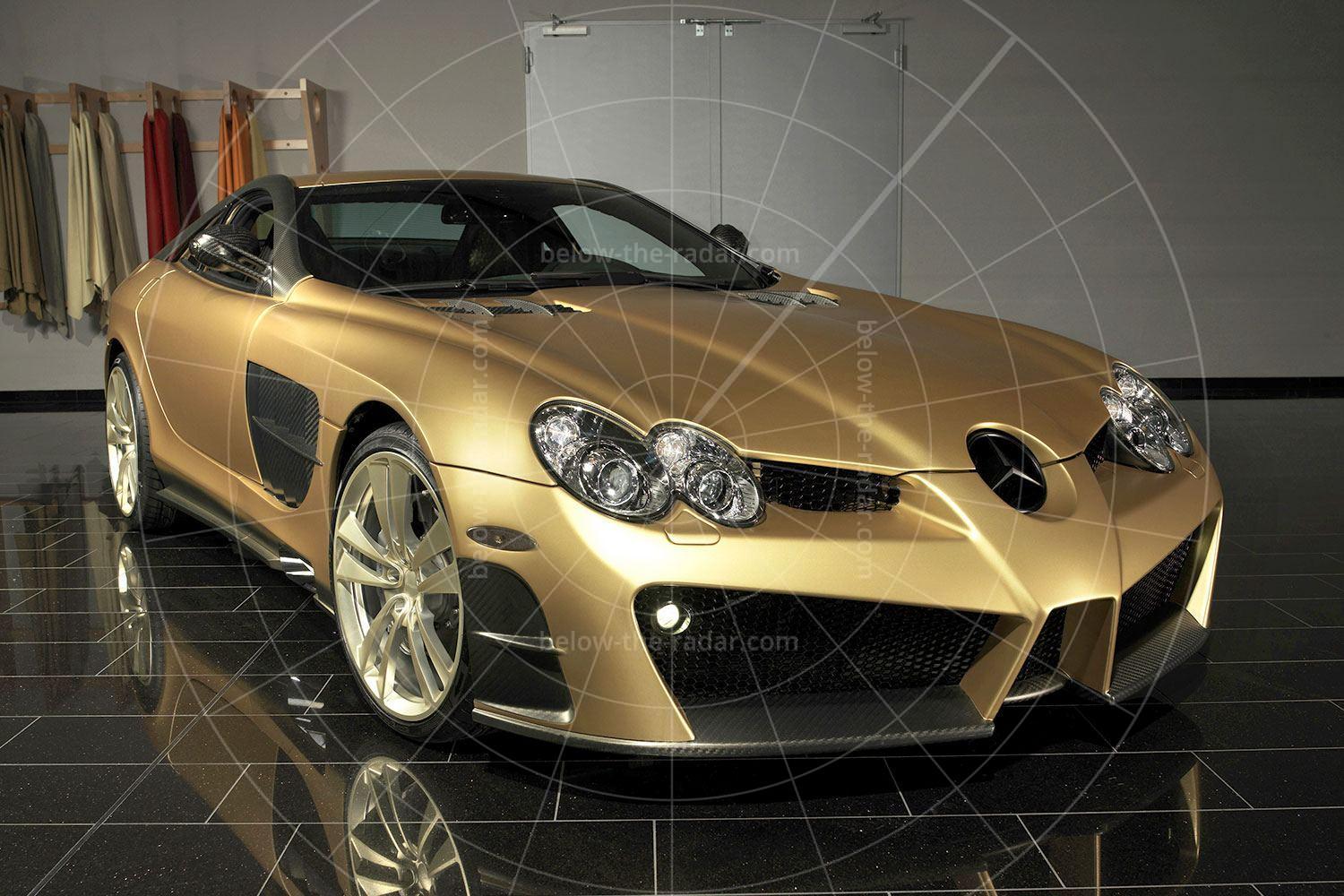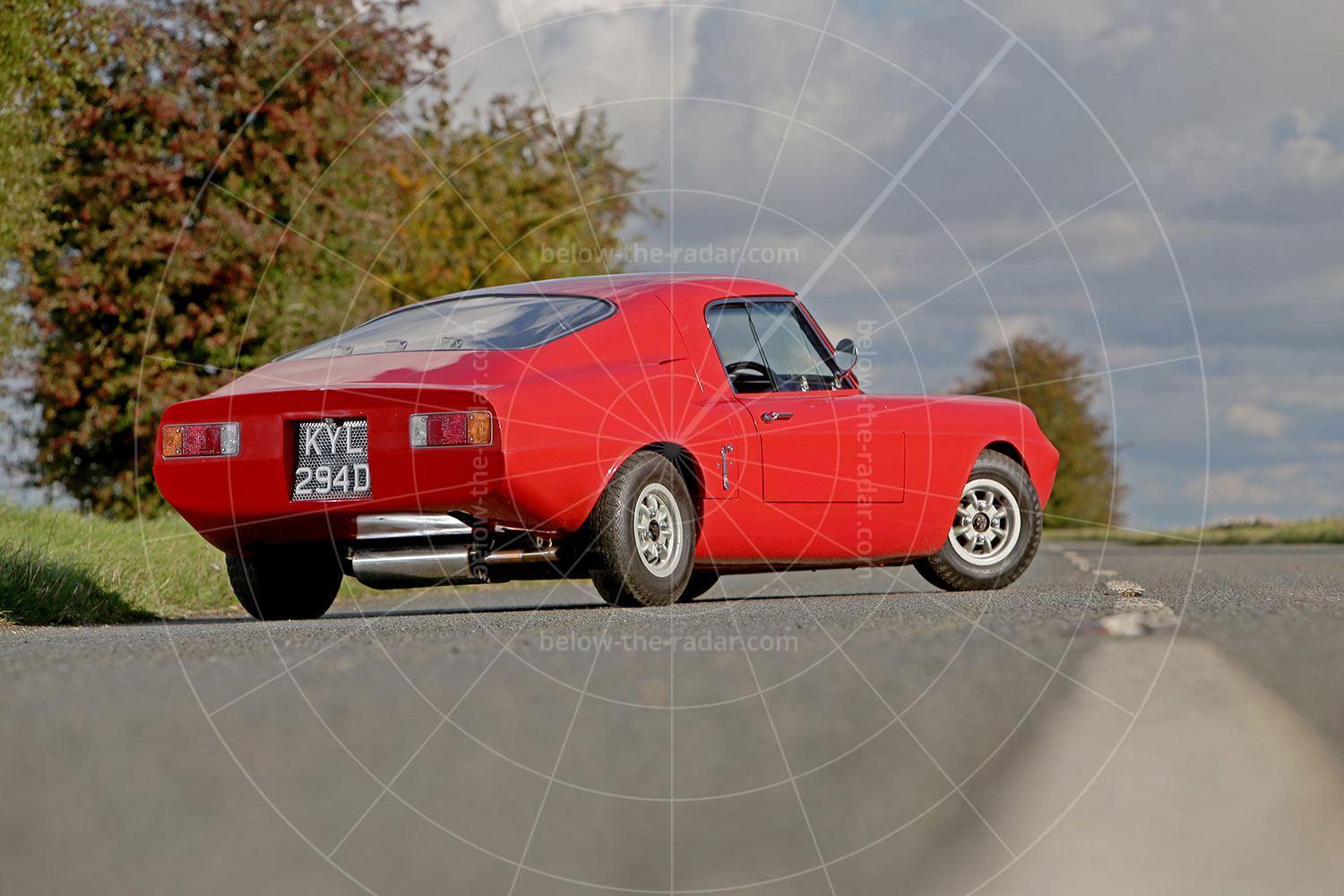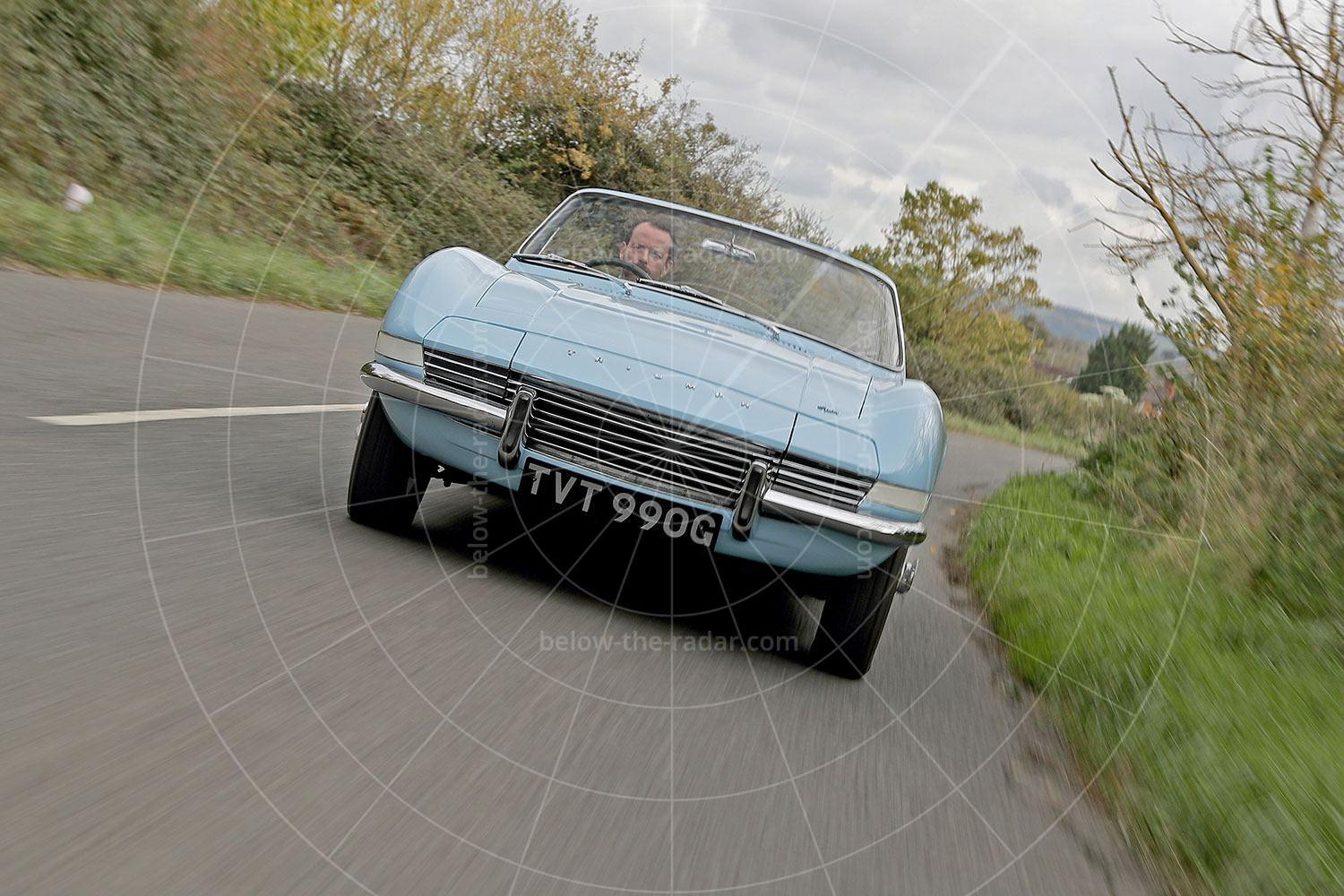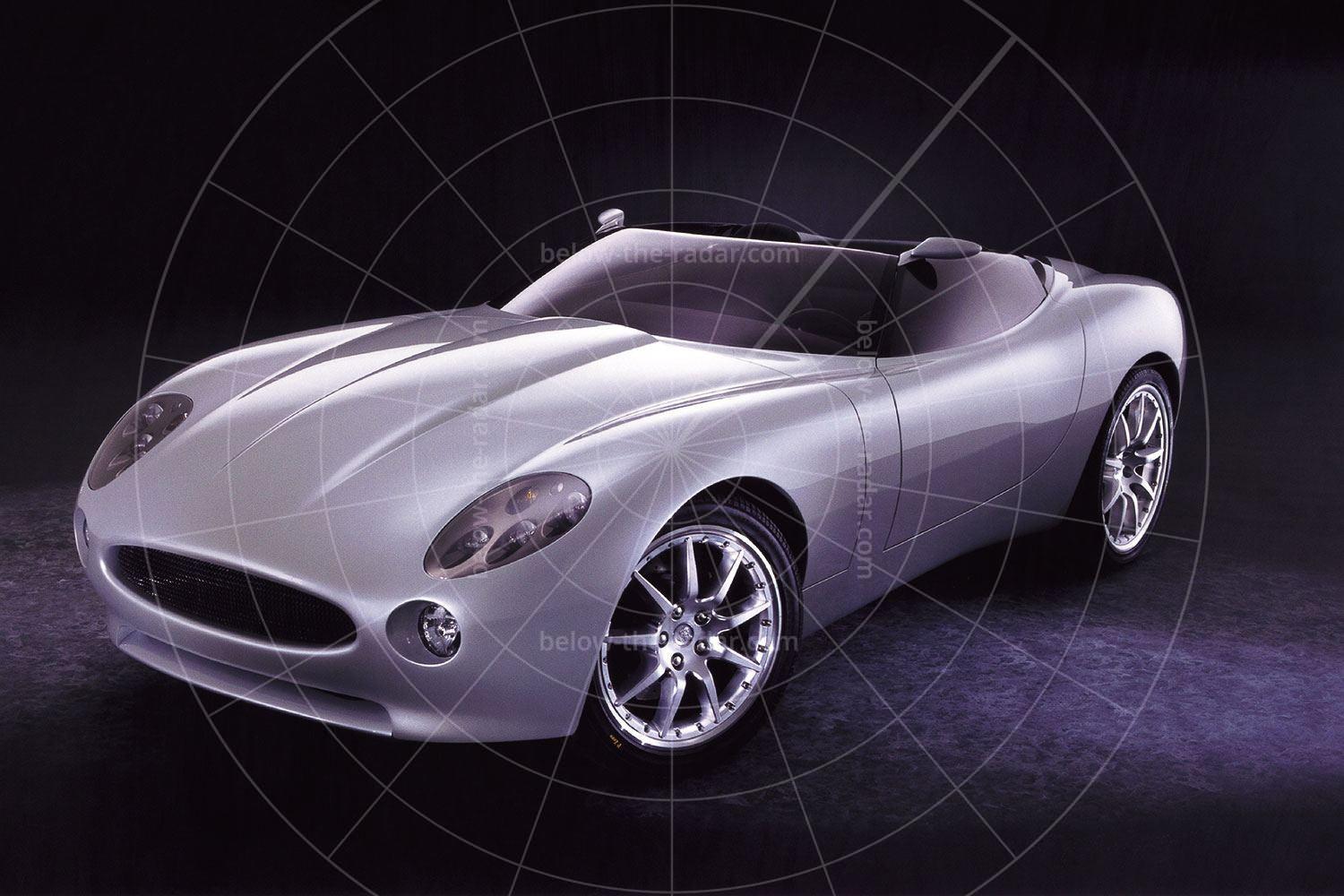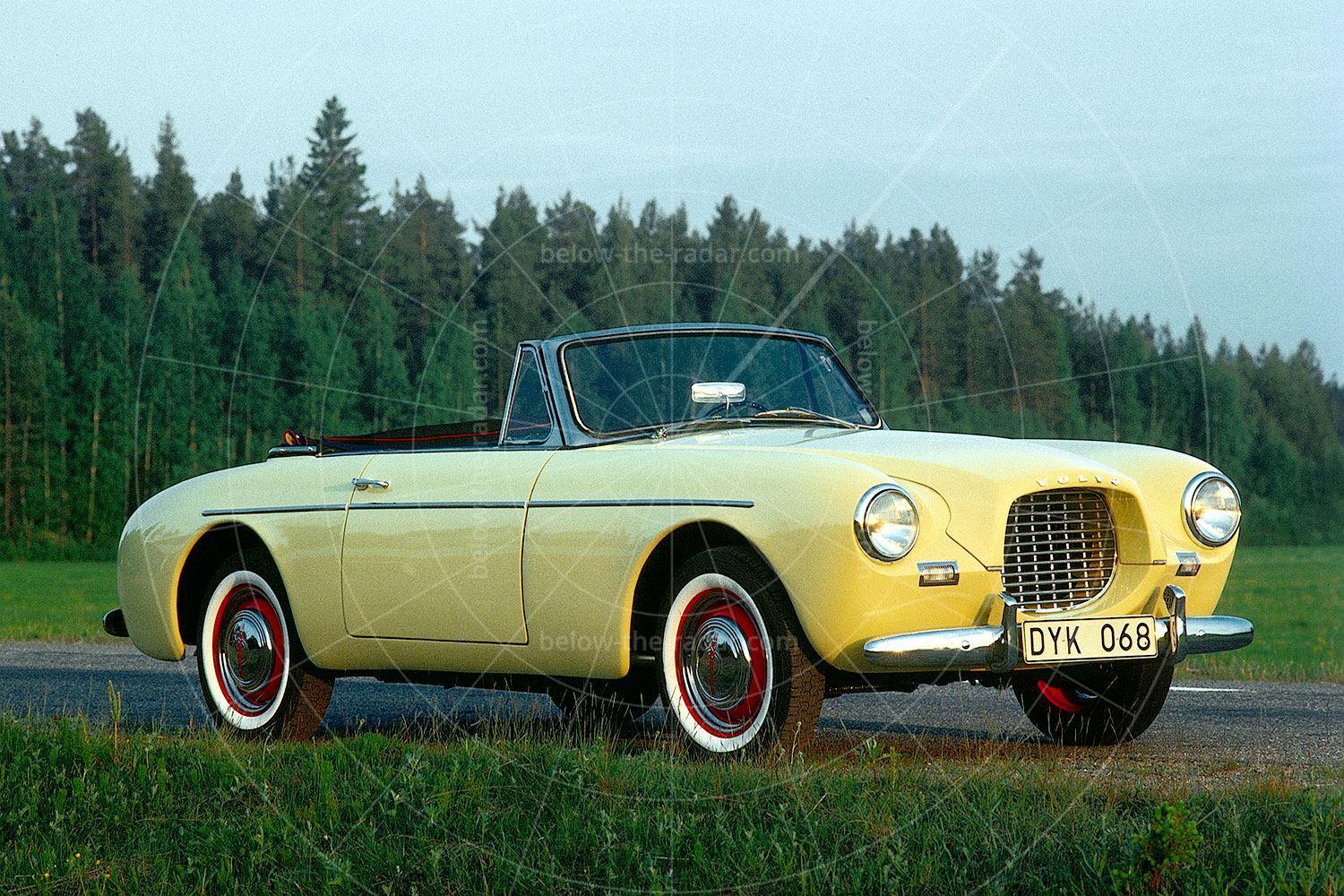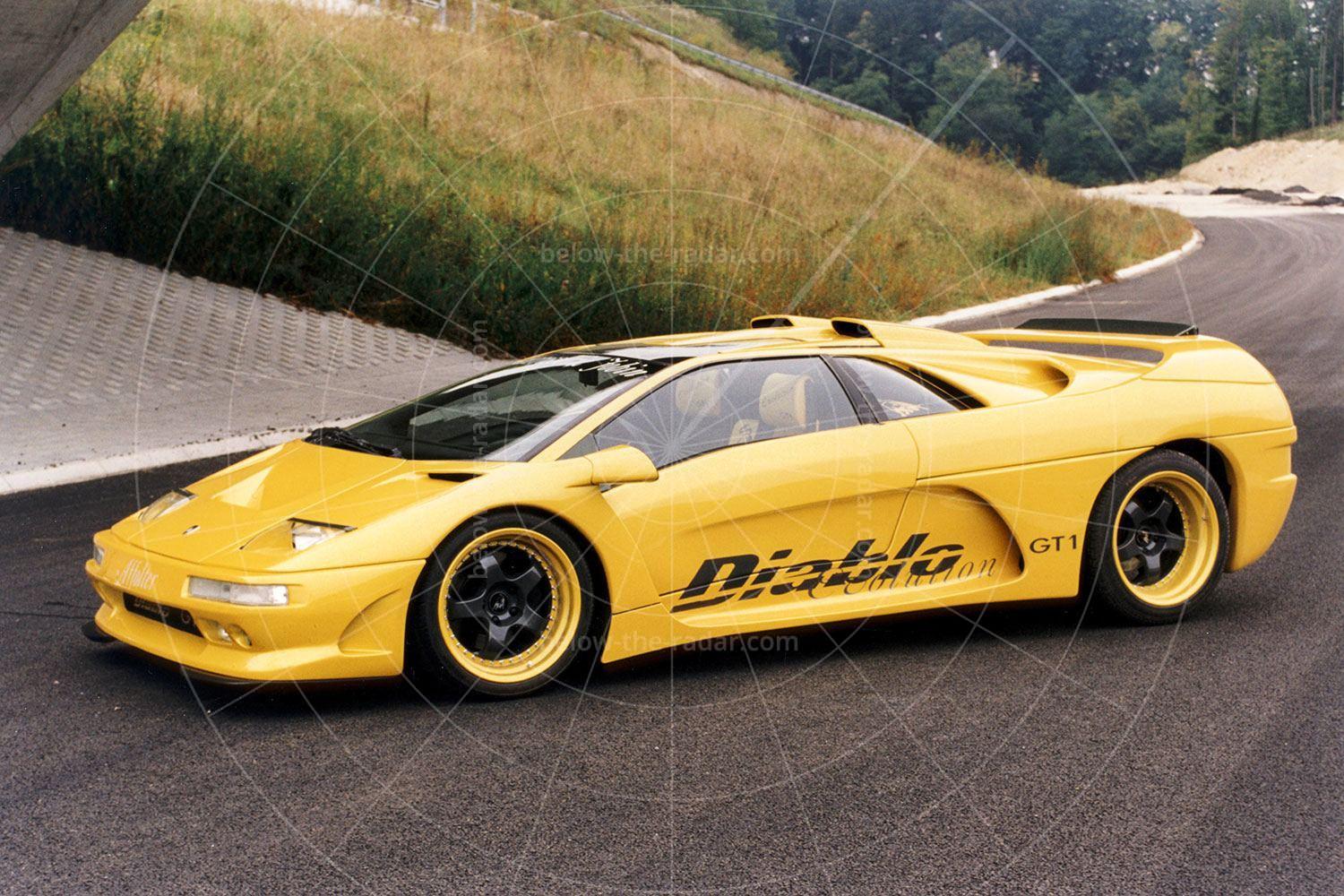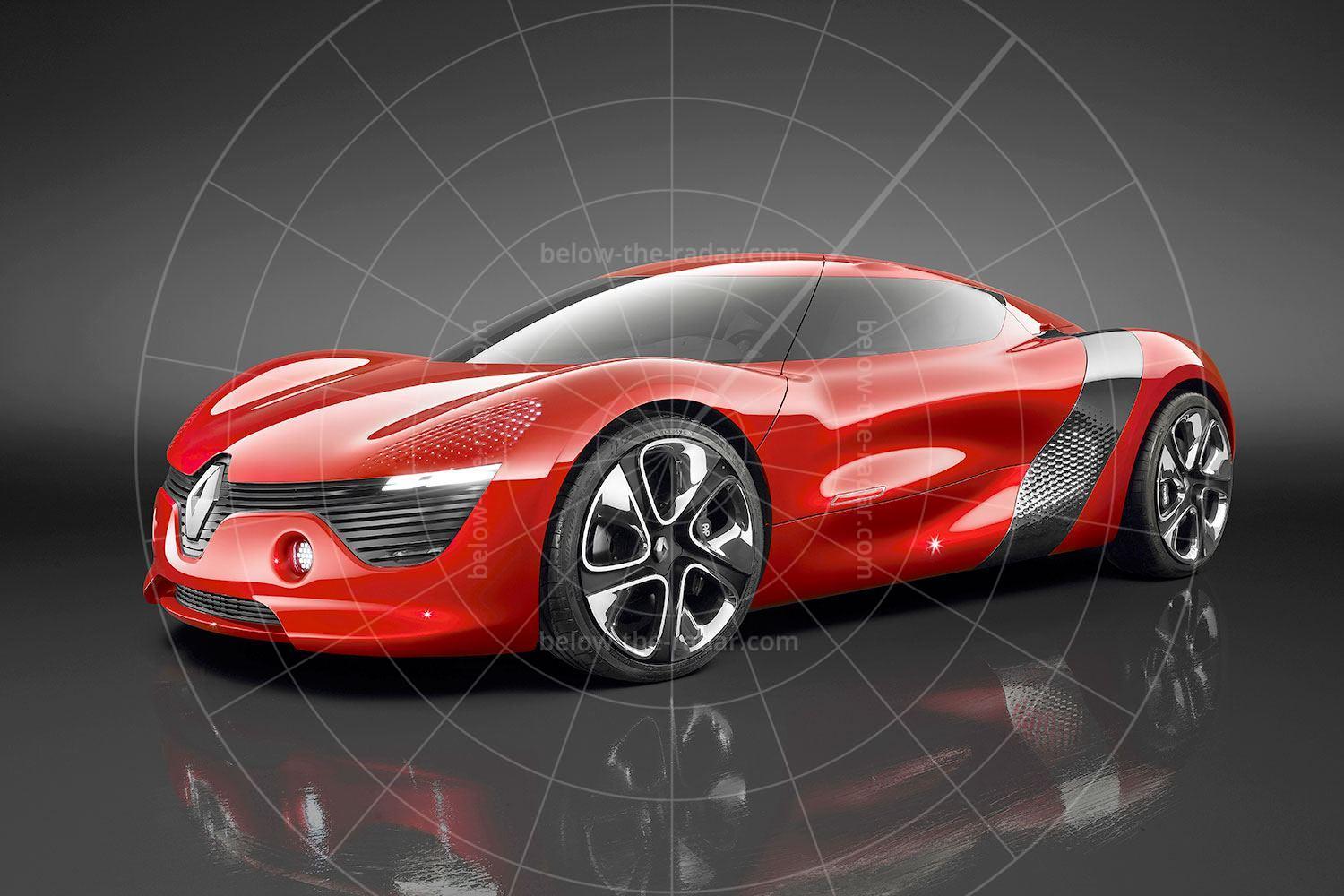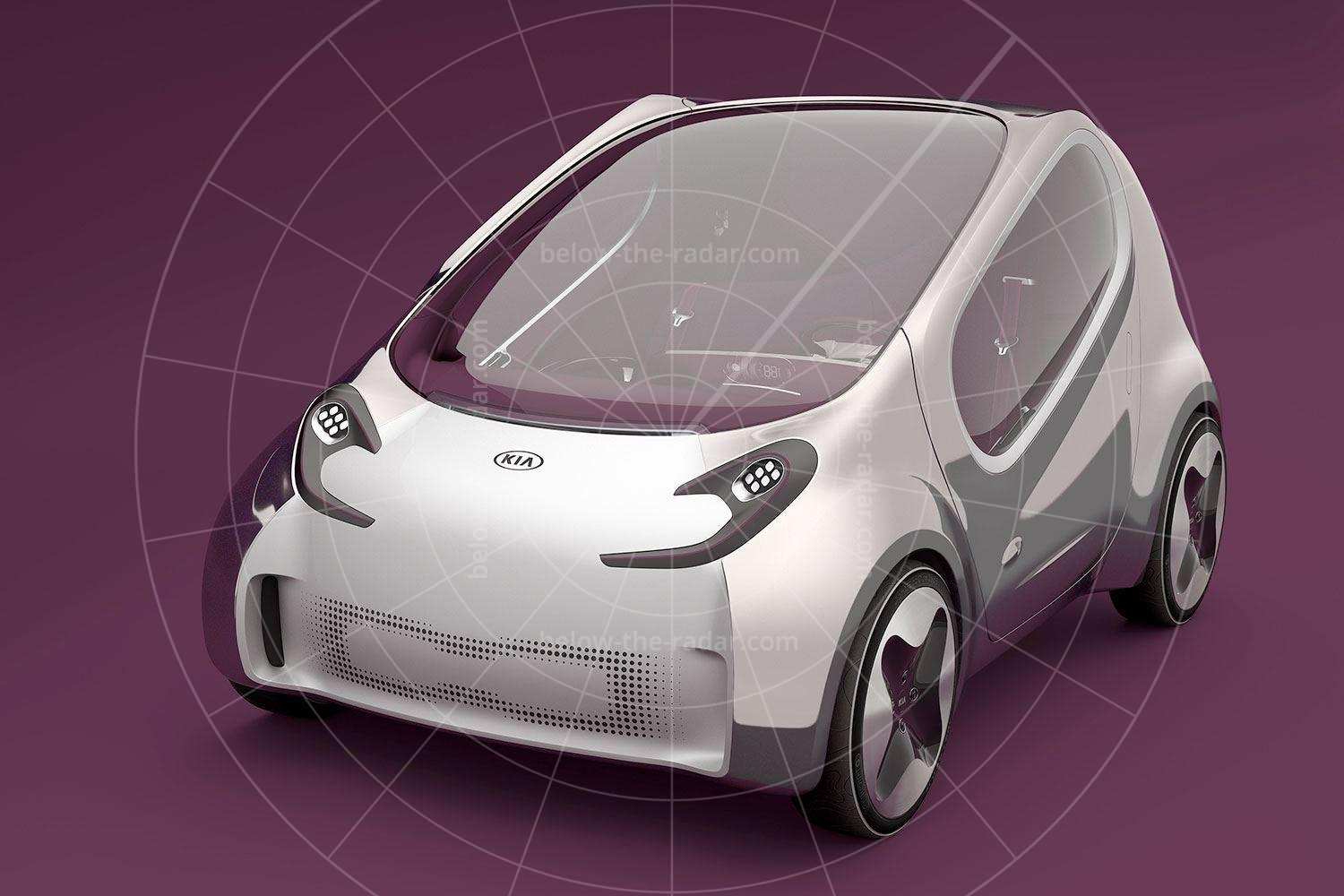The Chrysler Group has been no stranger to extreme concept cars over the years, but its Jeep division has typically been less forthcoming when it comes to shock and awe tactics. But after a string of barking mad concepts from the Chrysler Group, such as the Dodge Tomahawk and Chrysler ME Four-Twelve, it was Jeep’s turn in 2005, with a concept that was pretty much as far removed from reality as it’s possible to get.
Bizarrely, the premise for the Hurricane was ‘responsible excess’; somebody within Jeep decided that they wanted to test the theory that such a thing could exist. There was no doubt that the Hurricane represented excess in abundance, but it was hard – if not impossible – to see where the responsibility bit came in. After all, any car with two 5.7-litre V8 engines that between them produced nearly 700bhp and over 700lb ft of torque could only ever be perceived as somewhat over the top.
When it was unveiled the Hurricane was billed as ‘the most manoeuvrable, most capable and most powerful 4x4 ever built’, a claim with which it was hard to disagree. After all, with both axles capable of turning, the Hurricane was capable of spinning within its own axis.
While such a facility may seem like the ultimate in pointlessness, Jeep justified its fitment by saying that: “Out in the wilderness, changing direction in minimal space can mean the difference between an afternoon of adventure and a distress call back to the trailhead. The multi-mode four-wheel steering system is designed to offer enthusiasts the next level of performance and unexpected manoeuvrability.”
However, despite such functionality supposedly being indispensable to those intent on hard-core off-roading, so far none of the technologies showcased by the Hurricane have made production anywhere, and it’s not hard to see why.
Although the Hurricane was meant to be the most powerful and capable Jeep ever, it could also be surprisingly green thanks to its Multi-Displacement Engine. This could run on 4, 8, 12 or 16 cylinders depending on power requirements – and the distance of the car from the nearest fuel stop. When accelerating as quickly as possible, all 16 cylinders from both V8s would be burning fuel at the fastest possible rate, to develop the full 670 horses. In this mode, the Hurricane was capable of despatching the 0-60mph sprint in under five seconds; the sort of figures more usually associated with something a lot lower and a lot sleeker.
But as with any Jeep, go-anywhere ability was the Hurricane’s forté, the key to which was massive axle articulation. Naturally there was independent suspension all round; a double-wishbone set-up that provided a serious 20 inches of travel. Of course there was also full-time four-wheel drive; the power was delivered through a central transfer case and split axles, with a mechanically controlled four-wheel torque distribution system.
For added manoeuvrability the Hurricane featured two modes of automated four-wheel steering. The first was conventional, with the rear tyres turning in the opposite direction from the front, to reduce the turning circle. The second mode was targeted at off-road drivers: all four wheels turned in the same direction for nimble crab steering, allowing the car to move sideways without changing the direction it was pointing.
You didn’t have to study the Hurricane very closely to work out who had made it; this could only ever be a product of the fertile imaginations of Jeep’s designers. Those hugely flared wheelarches, the massive ground clearance and that iconic seven-bar grille all gave the game away, along with the circular headlights and heavily tapered bonnet.
What Jeep hadn’t done before though was to build a car with an engine in the front, and another in the back for good measure. That meant practicality had to take a back seat – well, if the Hurricane had been fitted with one, that may have been the case. But as it was there was space strictly for two only, each occupant getting a snugly fitting cloth-trimmed bucket seat.
The interior was something of a masterpiece, as it looked rather luxurious at first glance, but was actually pretty functional. Featuring lots of brushed aluminium, the most high-tech aspect of its appearance was the GPS system which was clipped to the dash.
Intriguingly, the one-piece monocoque was shaped of carbon fibre; this unitary design meant the bodyshell incorporated the separate chassis that would normally be used on this type of car. It also allowed the suspension and powertrain to be mounted directly to the body, while there was an aluminium spine which ran under the body to strengthen the underside and also to function as a complete skid plate system.
To complete the rugged looks there were alloy wheels which measured a hefty 20 inches in diameter; also 10 inches wide, they were wrapped in 305/70 R20 tyres. It was these, along with the minimal overhangs, which gave the Hurricane its tremendous manoeuvrability; with approach and departure angles of 64 and 86.7 degrees respectively, you’d have to search hard to find any terrain that would beat this all-conquering Jeep.
| Vital statistics | |
|---|---|
| Debut | Detroit 2005 |
| Engines | Front and rear-mounted, 5654cc, petrol V8s |
| Transmission | 5-speed auto, four-wheel drive |
| Power | 335bhp x2 (670bhp) |
| Torque | 370lb ft x2 (740lb ft) |
| 0-60mph | Under 5 seconds |

